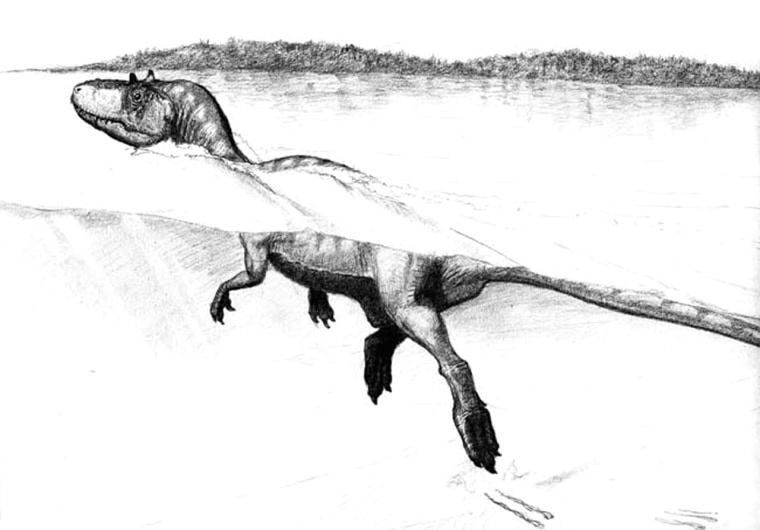Newly discovered fossilized claw marks paint a picture of a carnivorous dinosaur pedaling its hind legs as it swam against a strong current and struggled to maintain a straight path.
The fossils, part of a 125 million-year-old trackway, are the most compelling evidence to date that some non-avian theropod dinosaurs could swim, scientists say in the June issue of the journal Geology.
A team led by Ruben Ezquerra of the Foundation Patrimonio Paleontológico spotted the 50-foot-long trackway of 12 consecutive S-shaped prints in La Virgen del Campo in La Rioja, Spain-a track site known for its abundance of non-aquatic dinosaur prints, too.
Preserved in a layer of sandstone, the scientists found six asymmetrical pairs of two to three scratch marks measuring 20 inches in length. The spacing indicates a likely underwater stride of 95 to 107 inches. The shape and spacing of the prints suggests a dinosaur clawed the sediment as it swam through about 9 or 10 feet of water.
"The dinosaur swam with alternating movements of the two hind limbs, a pelvic paddle swimming motion," said study team member Loic Costeur of the Laboratory of Paleontology and Geodynamics in France. "It is a swimming style of amplified walking with movements similar to those used by modern bipeds, including aquatic birds."
Scientists have long wondered whether dinosaurs could swim. Two years ago, the discovery of the tracks of a two-legged swimming dinosaur on the shores of an ancient sea in Wyoming were announced at a meeting of geologists. Past evidence that pointed to aquatic dinos was later found to be prints produced on dry ground.
"The trackway at La Virgen del Campo opens the door to several new areas of research," Costeur said. "New biomechanical modeling will increase our understanding of dinosaur physiology and physical capabilities, as well as our view of the ecological niches in which they lived."
Tracks show dinosaurs were swimmers
Newly discovered fossilized claw marks paint a picture of a carnivorous dinosaur pedaling its hind legs as it swam against a strong current and struggled to maintain a straight path.

/ Source: LiveScience